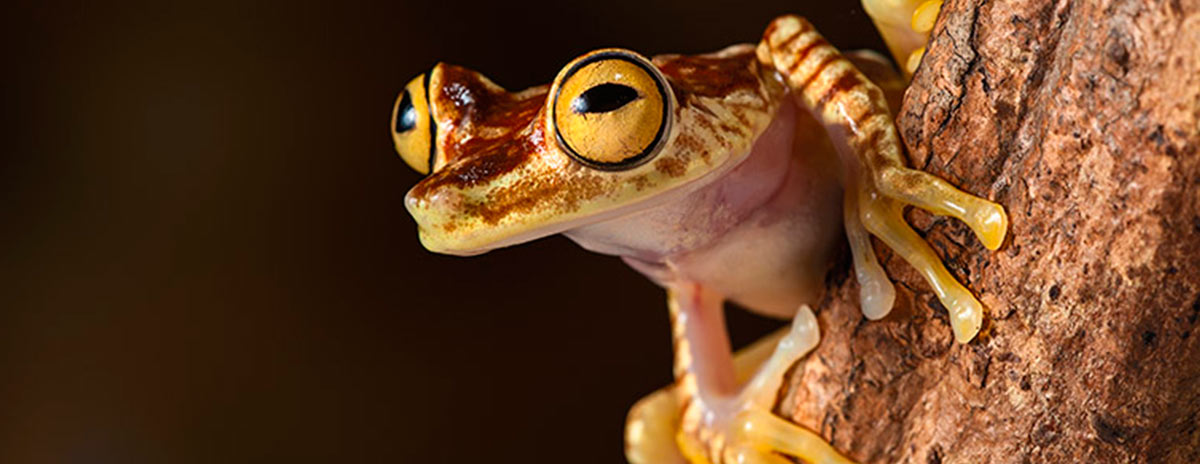
While reptiles are found all throughout the world, many of them are found in the tropics, including over 450 just in the Amazon rainforest. They range from carnivorous like the boa constrictor to herbivorous like the green iguana. Below are just some of the reptiles that you could see on your trip to the Amazon rainforest.
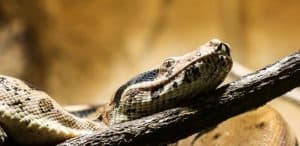
Powerful snakes and stealthy hunters, boa constrictors are also known as red-tailed boas or common boas. They are large, non-venomous snakes that can weigh anywhere from 20 to 60 pounds. Interestingly, the female is the larger sex. They average between 4-8 feet and can even reach 12-13 feet.
The emerald tree boa is a non-venomous boa species found in the Amazonian rainforests of South America. Like boa constrictors, female emerald tree boas tend to be larger in size, but the males have larger spurs. Emerald tree boas are solitary and nocturnal and are considered to be one of the most beautiful snakes in the world.
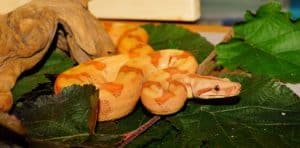 Also known as the Amazon tree boa, the common tree boa exhibits one of the greatest varieties of color and patterns of any snake species. They can be brown, gray, yellow, orange, red, and several other colors. If they are combinations of red, orange, and yellow, that is called the “colored phase” while gray, brown, or olive is considered the “garden phase.” Common tree boas do not change color during their lifetimes.
Also known as the Amazon tree boa, the common tree boa exhibits one of the greatest varieties of color and patterns of any snake species. They can be brown, gray, yellow, orange, red, and several other colors. If they are combinations of red, orange, and yellow, that is called the “colored phase” while gray, brown, or olive is considered the “garden phase.” Common tree boas do not change color during their lifetimes.
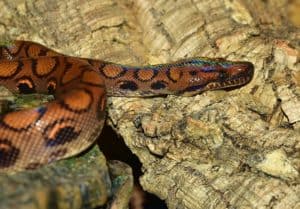
As the name implies, the rainbow boa is named for its iridescent skin that creates a rainbow-colored effect due to the refraction of light. Like the emerald tree boa, it is considered to be one of the most beautiful snakes. The rainbow boa is unique in that sexual maturity is determined by length rather than age. Males may starting breeding at 4 feet while females must reach 4.5 feet to breed.
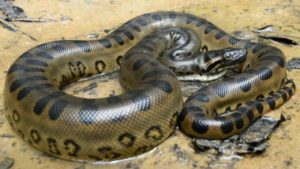 Weighing up to 550 pounds, the green anaconda is the largest snake in the world. Its size is relative to that of a school bus! Their length of 20 to 30 feet is slightly smaller than the reticulated python, but the significant girth of the green anaconda allow it to be twice as heavy.
Weighing up to 550 pounds, the green anaconda is the largest snake in the world. Its size is relative to that of a school bus! Their length of 20 to 30 feet is slightly smaller than the reticulated python, but the significant girth of the green anaconda allow it to be twice as heavy.
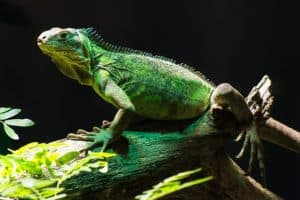
Known more commonly as simply iguanas, green iguanas are large lizards. They can reach 6 feet long and can weigh as much as 17.5 pounds although the average is 9-12 pounds. Even though they are called green iguanas, they can be brown, gray, black, or dark green. Hatchings and juveniles, though, are bright green, and the males will turn orange when they are mating.
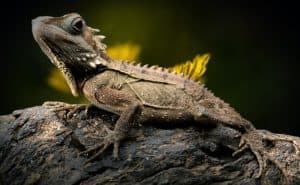
This lizard looks almost chameleon-like, as it dons an array of brown, green, and tan scales. You can distinguish the males from the females by the yellow throats of the males. As the name implies, tree runner lizards are normally found on branches or tree trunks, and they like to eat ants.
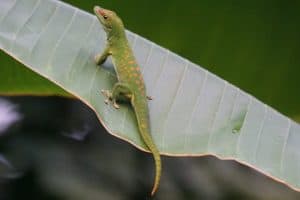 Typically not an active lizard, bridled forest geckos prefer life in the trees and eat a variety of insects found in the Amazon rainforest like ants, caterpillars, cockroaches, and earthworms. They will also eat mollusks. Bridled forest geckos are found in both the eastern and western portions of the Amazon rainforest.
Typically not an active lizard, bridled forest geckos prefer life in the trees and eat a variety of insects found in the Amazon rainforest like ants, caterpillars, cockroaches, and earthworms. They will also eat mollusks. Bridled forest geckos are found in both the eastern and western portions of the Amazon rainforest.
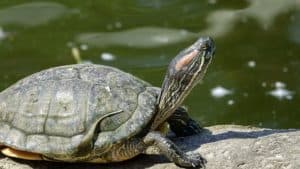
The largest side-neck turtle and the largest freshwater turtle in Latin America, the Arrau turtle is also known as the South American river turtle. It can be recognized by its distinctive dark upper shell and the yellow spots on its head, although they do fade with age.
Considered to be the smallest of the genus Podocnemis, the red-headed Amazon river turtle aptly has red markings on its head. Preferring fruit and seeds, red-headed Amazon river turtles like to lay their eggs in the beaches of clear water or even more so, black water.
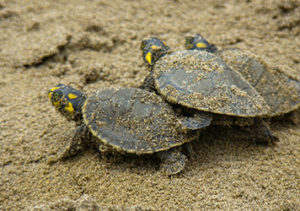
Likely the most common species of the genus Podocnemis, the yellow-spotted river turtle has yellow markings on its head. While they are omnivores, they tend to prefer fruit and seeds. They will lay their eggs in many different places, including beaches, clay banks, and in fallen leaves.
The second smallest species in the crocodilian part of the alligator family, the smooth-fronted caiman is actually more similar in appearance to the spectacled caiman, but it does not have a bony ridge, or spectacle, that occurs between its eyes.
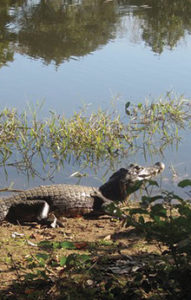
The top predator in the Amazon Basin, black caiman were severely hunted in the 1900s for leather, and their populations were reduced by significant percentages. Even though the populations are slowly recovering since being classified as endangered in the 1970s, you can only find black caiman in a few areas of the Amazon Basin.
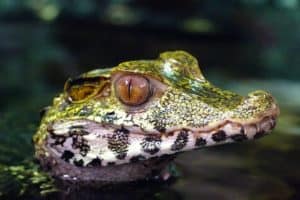
Also known as the common caiman, you’ll find spectacled caiman in many freshwater areas. They don’t do much during the day and seem to float leisurely on the surface of the water. At night, their activity increases as they feed on amphibians, birds, fish, and reptiles.
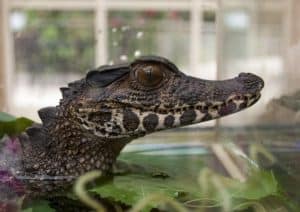
A small crocodilian in the alligator family, the dwarf caiman is only 3 feet long. It can be found throughout northern and central South America. Something unique about dwarf caimans is that newborns are brown and have black banded patterns.
Whether you see a lizard, caiman, snake, or turtle, you’re sure to be delighted by these distinctive yet also representative reptiles of the Amazon rainforest. Just be sure that you don’t get too close, especially if you see a 15-foot black caiman!